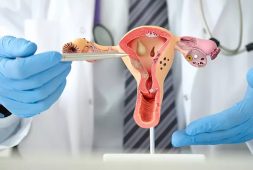Neuroscientists Create Test That Could Diagnose Parkinson’s Before It Starts Damaging Nervous System

American scientists have made a significant breakthrough in the diagnosis of Parkinson’s disease by developing a cutting-edge test that focuses on detecting damage to mitochondrial DNA in the bloodstream.
Parkinson’s disease is the second most common neurological disorder after Alzheimer’s, and it affects millions of people worldwide. This makes early and accurate detection and diagnosis crucial for effective treatment and management.
Traditionally, diagnoses of Parkinson’s disease have relied heavily on clinical symptoms, which often become apparent only after substantial neurological damage has already occurred. This delayed diagnosis has limited the effectiveness of available treatments. However, this newly developed test offers hope for the early detection of Parkinson’s disease, potentially before significant damage to the nervous system has taken place.
The study team, led by neuroscientists from the Duke University School of Medicine, focused on mitochondrial DNA, a critical component within our cells.
Mitochondria are unique cellular structures that contain their own DNA, distinct from the nuclear DNA that encodes the majority of an organism’s genetic information. Prior studies have established a strong connection between damage to mitochondrial DNA and an elevated risk of Parkinson’s disease.
Duke University researchers have previously reported an accumulation of damaged mitochondrial DNA in the brain tissue of deceased Parkinson’s patients, which underscores the potential significance of this biomarker in the disease’s progression.
The novel aspect of their work lies in the development of a blood test capable of detecting mitochondrial DNA damage, thus opening new avenues for early diagnosis and intervention.
Duke University neuroscientist and senior author of the study, Dr. Laurie Sanders, said, “A simple blood test would allow us to diagnose the disease earlier and start therapies sooner. Additionally, a clear-cut diagnosis would accurately identify patients who could participate in drug studies, leading to the development of better treatments and potentially even cures.”
One remarkable finding from this research is the test’s ability to identify high levels of damaged mitochondrial DNA in blood samples from individuals carrying the genetic mutation LRRK2, which is associated with an increased risk of Parkinson’s disease.
Notably, this test can detect the disease in patients, whether or not they possess the LRRK2 mutation. This versatile diagnostic tool promises to be an invaluable asset in identifying individuals at risk and allowing for early interventions that could potentially delay the onset or progression of Parkinson’s disease.
Dr. Sanders adds, “This disease takes a terrible toll on people… It’s important to get new, effective treatments over the finish line. Our hope is that this assay could not only diagnose Parkinson’s disease but also identify drugs that reverse or halt mitochondrial DNA damage and the disease process.”



